In the 1980s, Yamaha introduced the comeback of the 5-valve after decades of oblivion and went as far as testing, nearly producing 7-valve cylinder heads. Recognizing the limited potential of two-strokes in the future, Yamaha initiated extensive testing of 4-stroke head design technology.
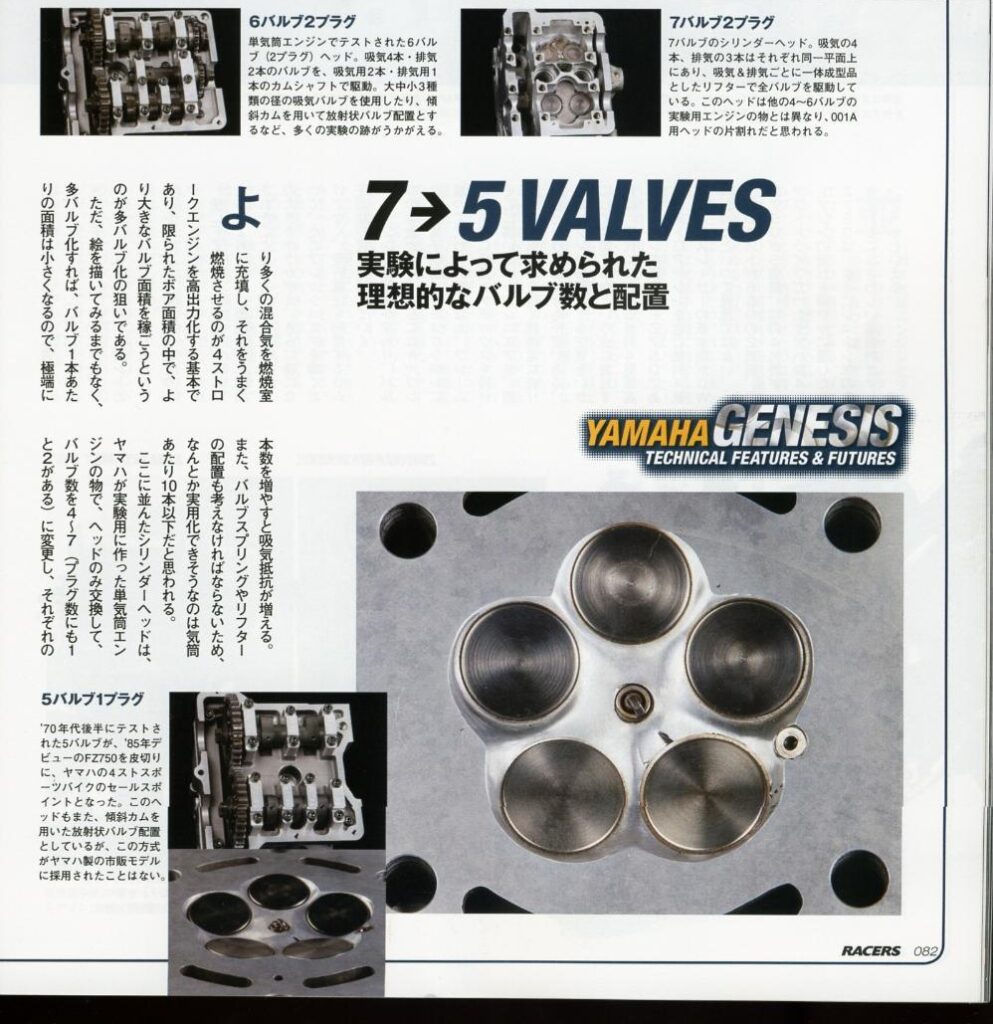
Honda in 1979 introduced the oval piston 8-valve engine in an attempt to surpass the winning two-stroke YZ500; this forced Yamaha to revisit their prototypes as they recognized the potential superiority of Honda’s unconventional engineering and also the looming risk of the two-stroke ban prompted them to seek an alternative ace up their sleeve just in case. In the pursuit of maximum volumetric efficiency they undertook extensive testing of various multi-valve configurations.
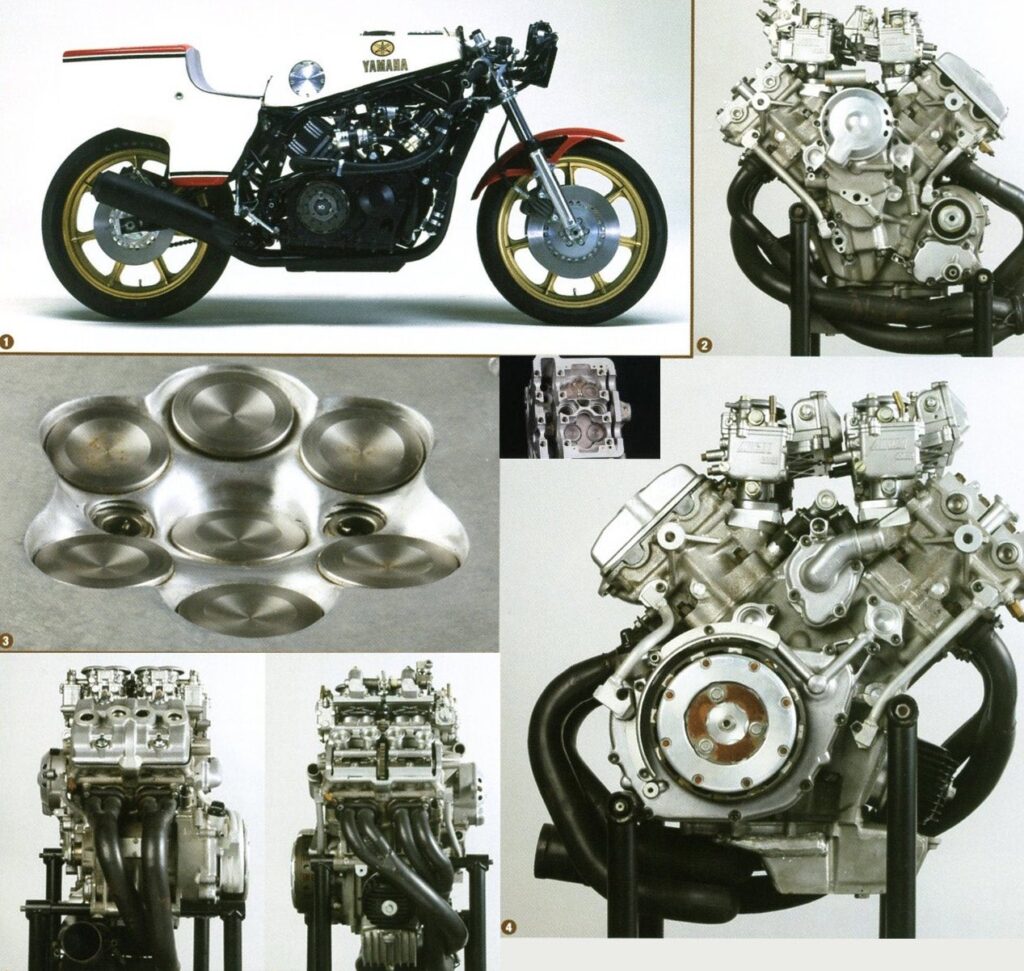
Engineers developed a single-cylinder test engine for researching, evaluating the merits and drawbacks of alternative solutions. Unlike Honda’s approach, Yamaha opted for conventional circular bore cylinder. The development phase included experimentation with a five-valve head featuring three intake and two exhaust valves, two different six-valve heads with four intake valves utilizing either a single or twin spark plugs and the most mind-boggling design: a seven-valve unit with four intake and three exhaust valves.
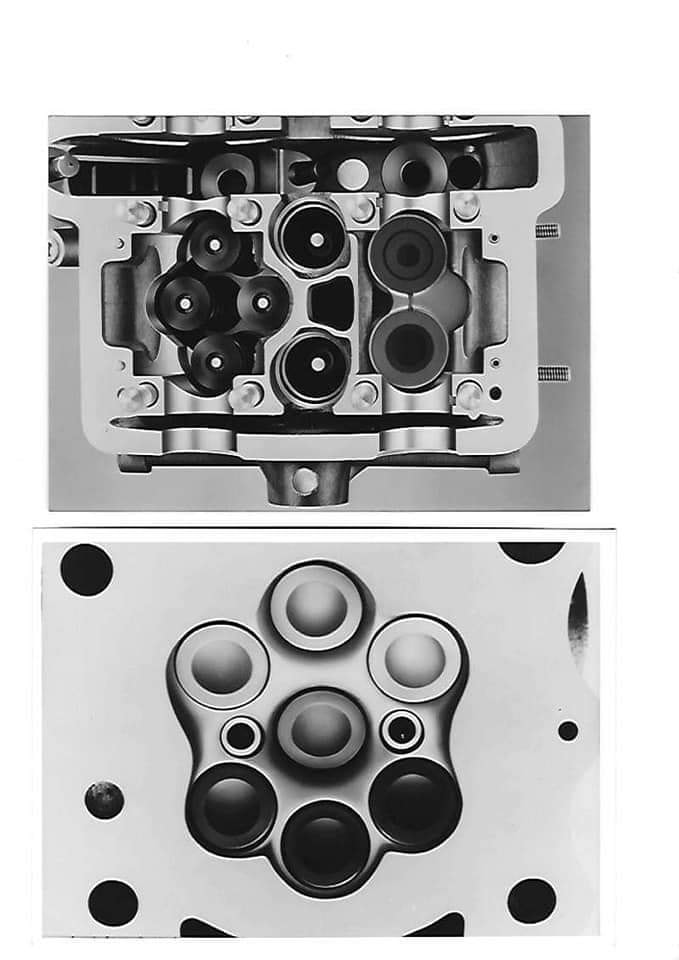
The research analyzed every aspect of each configuration, focusing on complexity, friction, valve size possibilities and cylinder filling. With multiple valves, twin spark plugs became essential to ensure even ignition of the air-fuel mixture throughout the cylinder. However, the findings revealed that beyond five-valves, the benefits in terms of airflow were marginal, the complexity of the valve train and the resultant friction outweighed any potential advantages.

The new 500cc 4-stroke 90° V4 engine was equipped with a revolutionary 7-valve head, boasting a total of 28 valves! With its ingenious design, the engine was rated at 125 hp and capable of revving over 20,000 rpm! However, despite its potential, the engine was never brought to fruition as the advancement of two-stroke engine technology rendered both the oval-piston Honda and Yamaha’s four-stroke 500cc racer obsolete; all the while having planned to produce a limited run of 200 units equipped with the 7-valve priced at 2 million yen each.

Ultimately the endeavor never happened and the project faded into history, remaining as a fascinating footnote in Yamaha’s engineering legacy. The extensive multi-valve engine development yielded significant results despite the absence of production 6 and 7-valve engines, instead the simpler 5-valve successfully transitioned from the research and development stage; heralding the beginning of the aforementioned Genesis engine series: an advanced, high-performance multi-valve 4-stroke engine lineage.
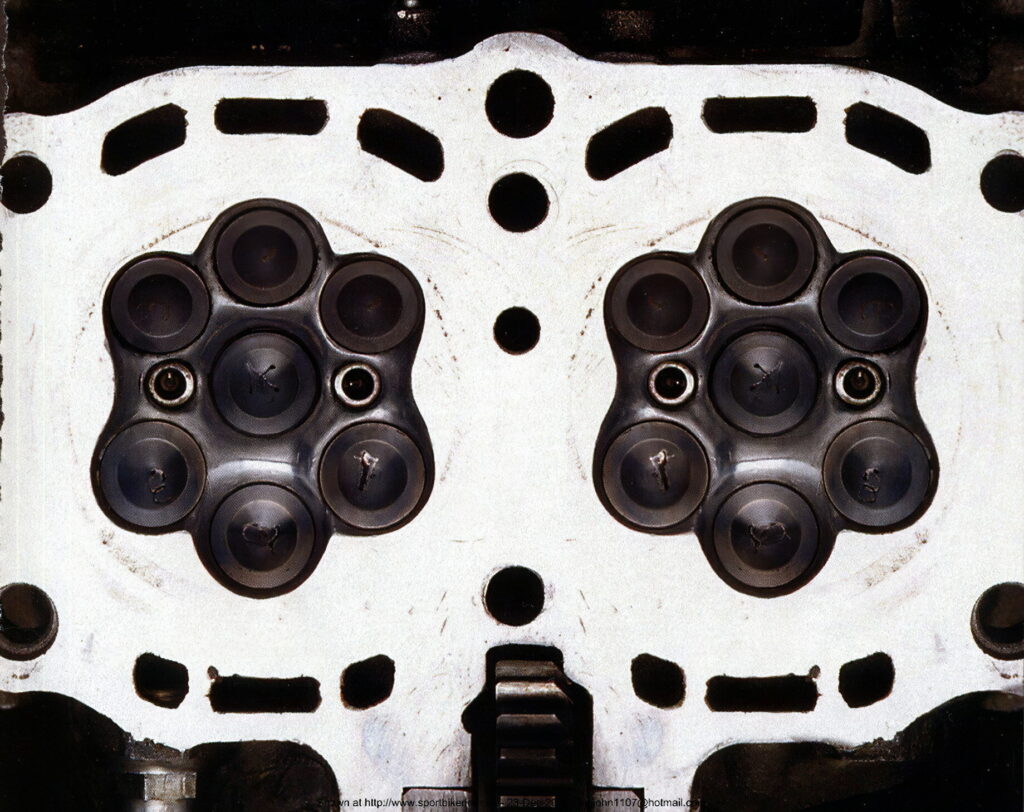
Yamaha emerged as one of the pioneering companies in the realm of 5-valve technology while still making their appearance decades after the first 5-valve Peugeot in the 1920s. The Genesis engine was further utilized in twin-cylinder configurations, powering models such as the TDM and TRX, as well as Yamaha’s iconic R1 from 1998 until 2006.
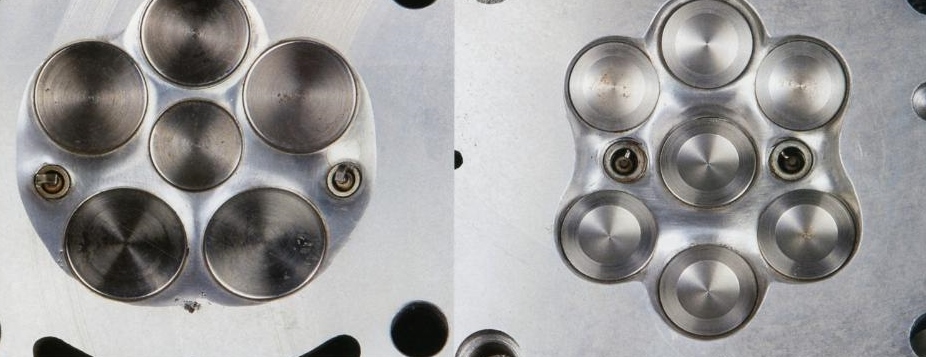
This commitment to multi-valve development likely contributed to Yamaha’s venture into Formula 1 in the late 1980s and established a reputation for producing some of the finest engines in the industry. This prowess extends not only to Yamaha’s proprietary engines but also those they have tuned, including the legendary 2-JZ, 4AGE, 2ZZ, 2UR, The screaming 1LR V10 from the Lexus LFA, the Taurus S.H.O. V6, as well as the Volvo V8 derived from an outboard boat engine.








